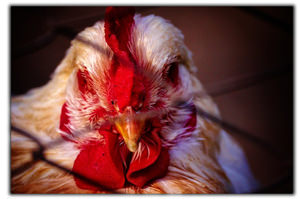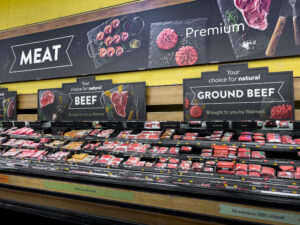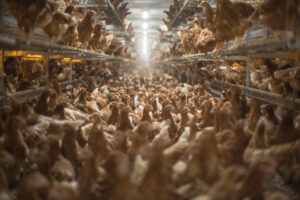Cheap Chicken Is Making You Sick
Chicken is a staple food in most American homes and is by far the most popular meat purchased in the country. And yet, when nearly 50 million people fall ill each year due to tainted food, poultry tends to be the main culprit.
Chicken is a staple food in most American homes and is by far the most popular meat purchased in the country. And yet, when nearly 50 million people fall ill each year due to tainted food, poultry tends to be the main culprit.
According to a recent analysis by Consumer Reports, it’s “unrealistic” to expect raw chicken to be bacteria-free, but the magazine found some extremely alarming and unexpected results. Fecal matter contaminated more than half of the 300 samples it tested, which included organic poultry and major brands. But perhaps worse is the fact that more than 50 percent of the chicken also contained at least one form of bacteria that was resistant to several of the most commonly prescribed antibiotics. Recently we learned that we’re already living in a post-antibiotic era in which medicines are no longer as effective as they used to be due to over-prescription, among other reasons. What wasn’t clear until now was where a lot of these drug-resistant bacteria can be found, but it seems you need look no further than your local grocery store.
There are many things that can be done to prevent against infections related to poultry, such as cooking chicken at a minimum of 165 F and keeping raw meat away from everything in your kitchen. But a large factor in the growth of bacteria in American chicken is the use of antibiotics in poultry production and also the conditions in which chickens are raised in large commercial farms. Though these factors keep chicken cheap, they are proving extremely hazardous to Americans’ health.
Meanwhile, there are viable alternatives to our form of production as simple as cutting antibiotics out of the picture. Thirteen or so years ago, the pork industry in Denmark decided to stop giving its pigs antibiotics, and both the farmers and livestock have “thrived.” However, things seem to be going in the opposite direction in the U.S. where food safety regulations are being loosened in order to create greater profits for the agricultural industrial complex. According to Consumer Reports:
Most chicken raised in the U.S. today comes from large-scale commercial farms optimized to produce the most meat at the lowest cost. To meet domestic and global demand, the industry slaughters almost 9 billion chickens a year.
A new USDA rule currently under consideration could make many changes in poultry production that food-safety advocates consider alarming and dangerous. It could increase the maximum line speeds at slaughter plants to 175 chickens a minute from the current maximum of 140 birds a minute. The new rule could also reassign some of the USDA inspectors’ duties to plant employees. Unlike federal inspectors, the plant employees are paid by the company, so they would have an incentive to overlook problems that might slow the lines down.
The rule would transfer more responsibility for safety to the companies that produce the chickens, allowing them to police themselves, says Tony Corbo, senior lobbyist at Food & Water Watch, a nonprofit group.
The USDA disputes the notion that the proposed new rule would have an impact on safety. And according to Dan Engeljohn, Ph.D., of the USDA, a government inspector would still be able to stop a line “if he has evidence to believe that the plant is not exercising good process control.”
As of July 2013 a pilot project was being tested in 24 poultry plants. The chicken industry considers the test, called the HIMP (for HACCP-Based Inspection Models Project), a success, and backs the proposal to adopt the new rule. But the Government Accountability Project, a nonprofit whistle-blower group, has released affidavits from federal inspectors working at HIMP plants, which allege that they were pressured to overlook possible food-safety concerns to keep the lines running.
And a Government Accountability Office report from August 2013 found that the USDA never followed through on promises to thoroughly evaluate the program’s performance at the plants involved in the pilot project and therefore lacked the necessary data to deem it a success. Yet despite this analysis, the USDA is moving forward on plans to expand the program. Advocates including Consumers Union, the public policy and advocacy arm of Consumer Reports, say that if these new rules are adopted, the bacteria problem will only get worse.
To read more about Consumer Reports in-depth investigation, click here.
—Posted by Natasha Hakimi
Your support matters…Independent journalism is under threat and overshadowed by heavily funded mainstream media.
You can help level the playing field. Become a member.
Your tax-deductible contribution keeps us digging beneath the headlines to give you thought-provoking, investigative reporting and analysis that unearths what's really happening- without compromise.
Give today to support our courageous, independent journalists.






You need to be a supporter to comment.
There are currently no responses to this article.
Be the first to respond.